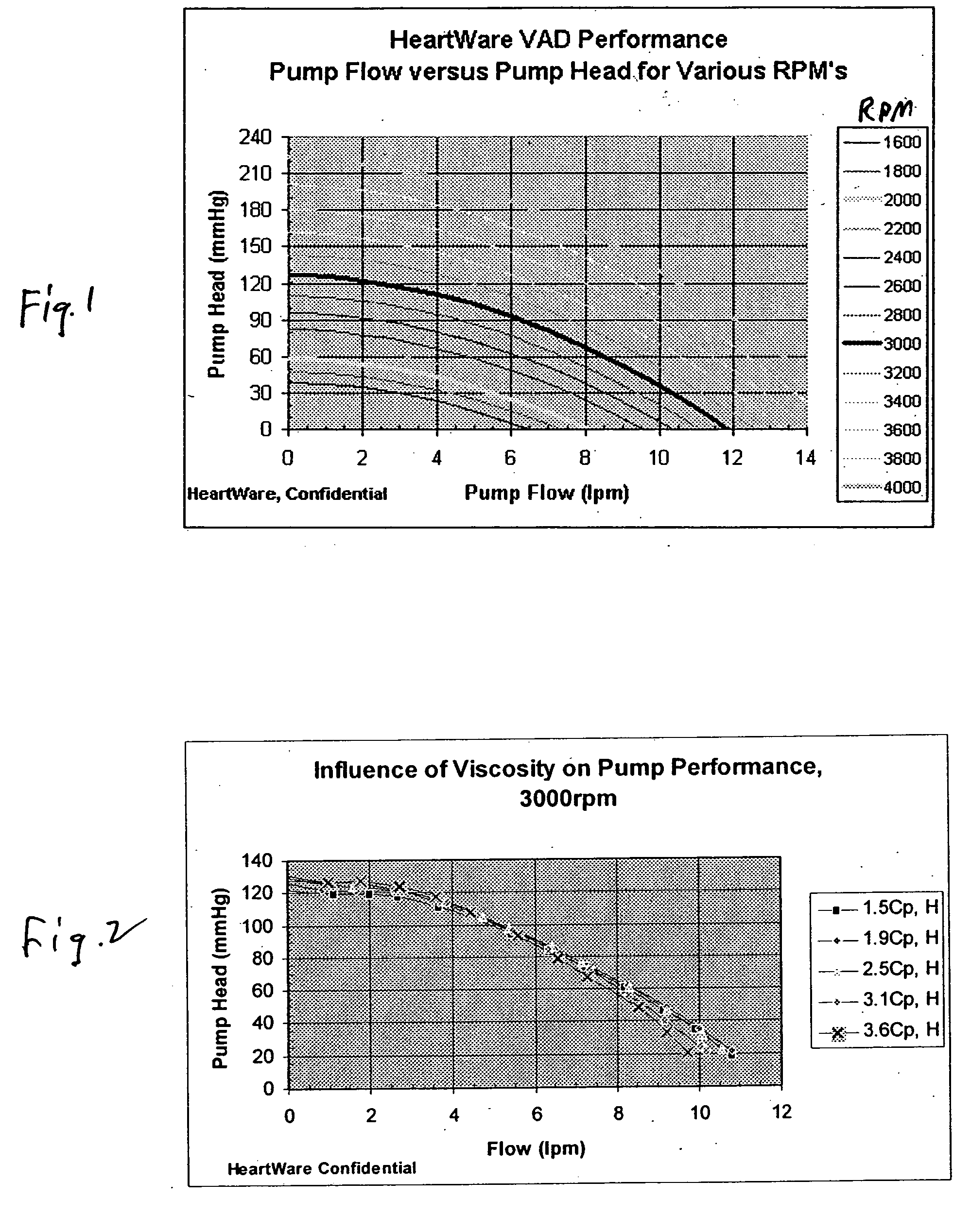Sensorless flow estimation for implanted ventricle assist device
- Summary
- Abstract
- Description
- Claims
- Application Information
AI Technical Summary
Benefits of technology
Problems solved by technology
Method used
Image
Examples
example
[0038] An in vitro test of blood pumping was performed, using a Heartware VAD.
[0039] Step 1. Obtain Fluid Viscosity
[0040] The rotational speed decay was monitored by depowering the impeller of the VAD while it was initially operating at 3,000 rpm. The rotational speed decay was measured in accordance with the Table I below:
[0041] We collected rotational speed (i.e., RPM) for several time increments to obtain the rotational speed decay rate after depowering:
TABLE 1Time (sec)RPM0.0030000.0228400.0426800.062515
[0042] Using a linear curve fitting routine, the initial rotational speed decay rate (i.e., dRPM / dTime is determined to be −8080 RPM / sec from the Table 1 data. An empirical relationship that characterizes the rate of rotational speed decay rate vs. fluid viscosity can be developed prior to installation of a VAD in a patient. Such a relationship is illustrated in FIG. 6, and is determined for the particular pump by experimentation.
[0043] The calculated speed decay rate (−808...
PUM
 Login to View More
Login to View More Abstract
Description
Claims
Application Information
 Login to View More
Login to View More - R&D
- Intellectual Property
- Life Sciences
- Materials
- Tech Scout
- Unparalleled Data Quality
- Higher Quality Content
- 60% Fewer Hallucinations
Browse by: Latest US Patents, China's latest patents, Technical Efficacy Thesaurus, Application Domain, Technology Topic, Popular Technical Reports.
© 2025 PatSnap. All rights reserved.Legal|Privacy policy|Modern Slavery Act Transparency Statement|Sitemap|About US| Contact US: help@patsnap.com



